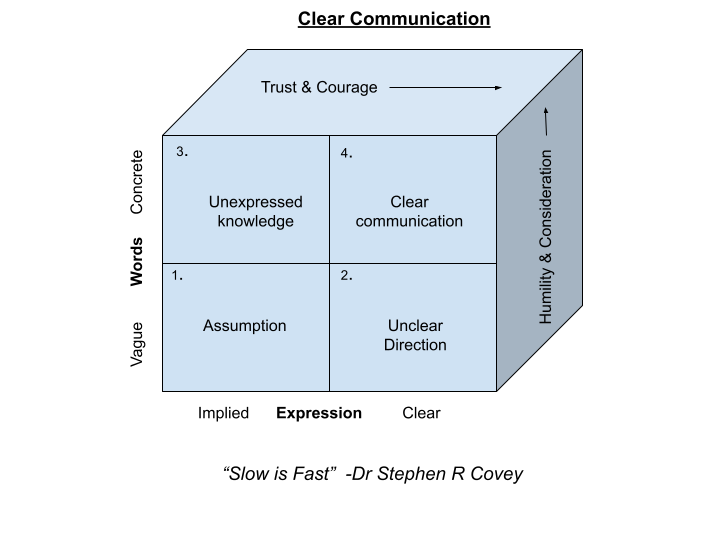Clear Communication
We are living in unprecedented times; challenges and confusion are rampant. Communication is often unclear and there seems to be a general feeling of uncertainty. It is difficult to know what is true and what is false. Compounding this perpetual state of uncertainty is the fact that we live in a world where we want instant answers. The power of the screen (Google, TV, social media), with its eloquent communicators and attractive graphics can convince us that something is true when in reality, it is just a show.
In part 1 of Alignment, we learned about setting up communication rituals as an entire team that are consistently repetitious. These rituals allow your team to understand clearly where you are going as a practice, and what the team should be focused on right now.
Clear communication in your practice is essential to thriving growth. We can all agree that communication is difficult; it requires understanding, intentionality, trust, and time. Stephen R Covey, the author of 7 Habits of Highly Effective People, says, “Slow is Fast,” when it comes to communication. It is therefore essential for you to develop clear communication methods – and then teach this model to your team.
As you develop your practice with a sincere understanding of the importance of clear communication, you will scale your growth by a factor of 10, 100, or even 1000s.

Quadrant 1- Assumption: Words are vague and expression is implied. We see a snapshot of a situation and we make an assumption based on a “hunch” or “interpretation.” The words we heard were vague and the expression was implied. “All the staff does is waste time and spend all day on their phones.”
“The biggest challenge of leadership is realizing your team can’t read your mind.”
~ Michael Hyatt
Quadrant 2 – Unclear Direction: Words are vague, but expression is clear. A team member is clear and enthusiastic about a new project, but the direction is vague and confusing. “Organize all treatment rooms so they are orderly, and help with the efficiency of performing treatments.” What is the time frame? What tools or equipment is needed? What is the budget? All these questions mean that the direction is unclear.
Quadrant 3 – Unexpressed Knowledge: Words are concrete, but expression is implied. This is the curse of familiarity. A new team member comes on board and the manager tells them, “It is very important that you are consistent with offering second mile service to all our patients.” the new team member wants to know, “What is second mile service, and how do I do that?” This is information that exists only in your mind. Practice owners say, “I know exactly how to run my practice; it is all in my head.”
Quadrant 4 – Clear Communication: Words are concrete and expression is clear. This requires high trust and courage, as well as consideration and humility. Clear communications must be expressed in written form, and should be structured and mutually agreed-upon. This approach keeps both parties aligned. You should then review the communication together to be sure feedback and input are considered, and necessary adjustments are made to obtain clarity.
Grateful to be on this journey with you,

Dr. Matthew Harkness

 Receive helpful, real-world, practical advice from a small medical practice veteran that you can use to grow your own practice – without the growing pains.
Receive helpful, real-world, practical advice from a small medical practice veteran that you can use to grow your own practice – without the growing pains.
Recent Comments